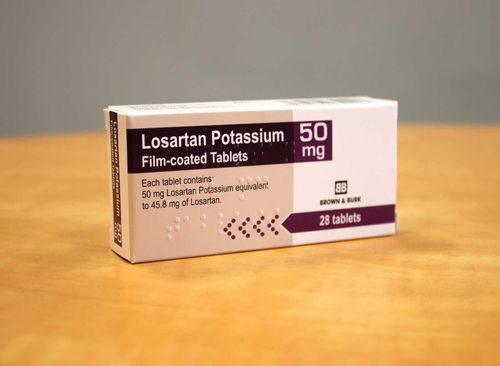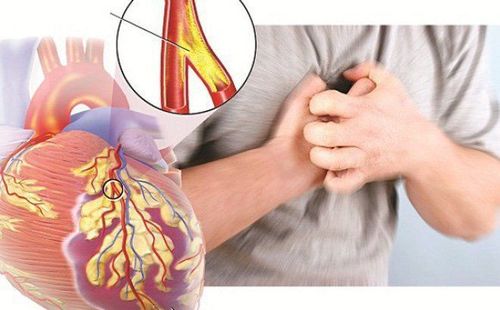This is an automatically translated article.
Flamogrel belongs to the group of cardiovascular drugs with the main ingredient clopidogrel. It is commonly used for the prevention of myocardial infarction, stroke, and peripheral artery disease, or for the control and secondary prevention of patients with recent stroke. So how does Flamogrel work?1. Uses of the drug Flamogrel
Flamogrel has the main ingredient clopidogrel which is a selective inhibitor of the binding of adenosine diphosphate (ADP) to the platelet receptor thereby inhibiting platelet aggregation. In terms of pharmacokinetics, clopidogrel is rapidly absorbed after oral administration and is not affected by food. Clopidogrel and its major metabolite are reversibly bound to plasma proteins, metabolized mainly in the liver, and finally excreted in urine and feces. Flamogrel is usually indicated in the following cases:Primary prevention of thromboembolic disorders such as myocardial infarction, stroke and peripheral arterial disease Reduction of atherothrombotic events in patients with thromboembolic events. patients with a history of atherosclerosis manifested by ischemic stroke (from 7 days to less than 6 months), myocardial infarction (from a few days to less than 35 days) or peripheral arterial disease determined In combination with acetyl salicylic acid for the treatment of patients with acute coronary syndromes without ST-segment elevation (unstable angina or non-Q-wave myocardial infarction) Flamogrel drugs include:
Patients with hypersensitivity to any component of Flamogrel Patients with bleeding disorders such as peptic ulcer or intracranial hemorrhage Severe liver disease Pregnant women, nursing mothers
2. Dosage of the drug Flamogrel
Depending on the subjects and treatment goals, the dose of Flamogrel will be different, specifically as follows:
Patients with a history of atherosclerosis: take 1 tablet (75mg) per day Preventive dose Prevention of thromboembolic disorders such as myocardial infarction, peripheral artery disease, stroke: 1 tablet (75mg)/day Acute coronary syndrome (unstable angina, myocardial infarction without Q wave): initial dose of 300 mg administered as a single dose, followed by a maintenance dose of 75 mg/day No dose adjustment required Flamogrel in patients with renal impairment or the elderly When clopidogrel overdose can cause prolongation of time. bleeding and acute toxic symptoms such as vomiting, fatigue, dyspnea
3. Flamogrel side effects
In some patients when using Flamogrel, side effects may occur such as:
Digestive disorders: diarrhea, abdominal pain, indigestion, nausea Skin allergies: erythema, itching Chest tightness, bleeding Orange Gastrointestinal bleeding, gastric ulcer Hemorrhagic thrombocytopenia Aplastic anemia Nephritis syndrome Loss of taste Rheumatism
4. Be careful when using Flamogrel
Some general notes when using Flamogrel include:
Caution when using Flamogrel drug in patients with bleeding due to trauma, surgery or other diseases Patients preparing for surgery should stop using clopidogrel 5 days before surgery Caution should be exercised when clopidogrel is used in patients with bleeding-prone lesions (eg, ulcers). due to CYP2C19) There are no studies on the use of Flamogrel in pregnant women. Therefore, it should be used during pregnancy only when absolutely necessary and when considering the risks and benefits, there are no studies. Because of the excretion of clopidogrel in breast milk, caution should be exercised when clopidogrel is used in nursing women. Clopidogrel has no influence on the ability to drive and use machines. Caution should be exercised when clopidogrel is combined with warfarin, NSAIDs, heparin, acetyl salicylic acid because of possible increased risk of bleeding
Please dial HOTLINE for more information or register for an appointment HERE. Download MyVinmec app to make appointments faster and to manage your bookings easily.













